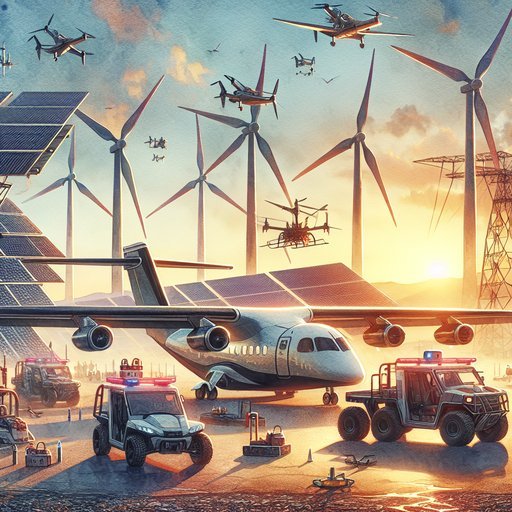
In an exciting cosmic revelation, the James Webb Space Telescope (JWST) has captured an image of a remarkably ancient and frigid exoplanet. This celestial body, observed directly by JWST, holds the potential to drastically advance our understanding of planetary formations and the conditions prevailing in the early universe. As one of the coldest, oldest, and faintest planets ever imaged, this exoplanet offers a unique glimpse into the cosmic past [2].

IBM announced a groundbreaking advance in quantum computing, revealing a new architecture that significantly improves error correction in quantum systems. As reported on June 14, 2025, the company claims this development will reduce the number of qubits needed to perform error correction, marking a critical step toward mass deployment of quantum technology [1]. This breakthrough forms part of IBM's ambitious roadmap aiming for a fault-tolerant quantum computer by 2029, named the IBM Quantum Starling [6].

In a bold stride towards technological self-sufficiency, China has announced the development of the world’s first processor designed entirely by an AI-driven system named QiMeng. Unveiled by the Chinese Academy of Sciences, this innovation comes against a backdrop of escalating U.S.-China tech tensions, with both nations taking significant steps to secure their technological interests [4][5][6].

In an alarming development, the U.S. Cybersecurity and Infrastructure Security Agency (CISA) issued a warning about active ransomware threats exploiting vulnerabilities in the widely-used SimpleHelp remote monitoring and management (RMM) software. This vulnerability has placed countless businesses, particularly those using a specific utility billing software, at risk of data breaches and double extortion attacks. The issue draws attention to the growing threat posed by ransomware gangs capitalizing on unpatched software vulnerabilities across supply chains [11][13].

In an ambitious leap toward creating a sustainable future in space exploration, a cutting-edge satellite constellation was launched today, marking a vital milestone in the rapidly evolving satellite launch vehicle market. This comes at a pivotal time as the industry readies itself to soar from a valuation of USD 18.4 billion in 2025 to an anticipated USD 64.5 billion by 2034. This surge is driven in part by the introduction of eco-friendly propulsion systems that are shaping the future of the space industry [1].

The augmented reality space is buzzing with excitement as Snapchat and InCitu launch groundbreaking advancements poised to redefine how we interact with digital content. Snapchat, renowned for its playful filters, is launching a new subscription service for its popular Lenses, intending to make AR a central part of everyday experiences. Simultaneously, InCitu is making waves by using AR to transform urban planning, giving residents an immersive look into future infrastructure developments.

A recent boom in the NCA (nickel-cobalt-aluminum oxide) battery market is set to revolutionize electric aviation and emergency response vehicles. This innovation promises significant advancements in energy efficiency, rapid charging, and overall battery performance, earning widespread attention across various industries [1]. Coupled with the development of the Oshkosh Striker Volterra electric ARFF vehicle, these enhancements are poised to redefine the future of electric-powered aviation and emergency services [2].

In a transformative leap for the semiconductor industry, the Chinese Academy of Sciences has introduced 'Qi Meng,' the world’s first fully automated AI-based processor chip design system. This development promises to revolutionize how chips are conceived, significantly reducing human error and accelerating the manufacturing timeline. By leveraging advanced AI algorithms, Qi Meng is poised to enhance chip design efficiency and broaden China's influence in the global tech arena [1].
 Augmented Reality (AR) is a technology that superimposes computer-generated graphics onto the user's real-world view, creating an intertwined blend of physical and virtual realities. AR is transforming from just a standalone innovation into a gateway to the emergent realm of the Metaverse, a collective virtual space that encompasses all digital experiences, becoming a significant focus for tech giants globally.
Augmented Reality (AR) is a technology that superimposes computer-generated graphics onto the user's real-world view, creating an intertwined blend of physical and virtual realities. AR is transforming from just a standalone innovation into a gateway to the emergent realm of the Metaverse, a collective virtual space that encompasses all digital experiences, becoming a significant focus for tech giants globally.

Recent advancements in NCA (Nickel Cobalt Aluminum) battery technology are significantly impacting the electric aviation market, as evidenced by its growing applications in electric aircraft, drones, and specialized rescue vehicles. The innovations predominantly focus on enhancing energy efficiency, charging speeds, and overall battery performance, making a substantial mark on industries reliant on cutting-edge mobile power sources [1].
























